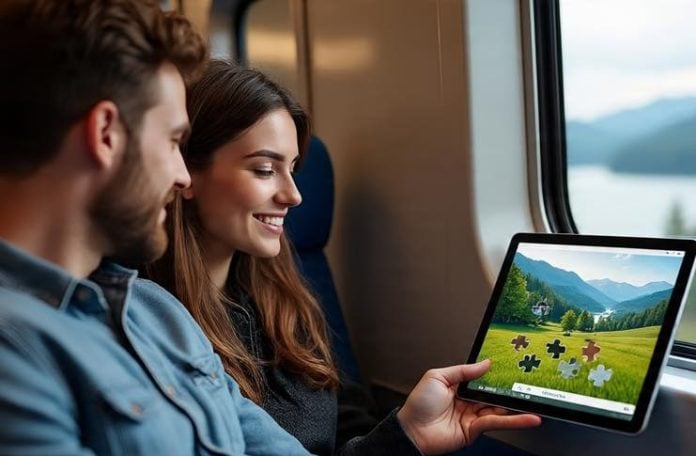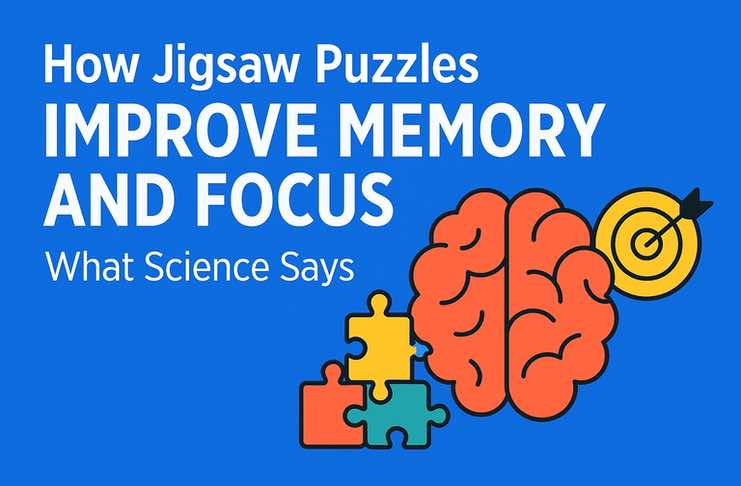
Jigsaw puzzles are more than a cozy hobby — they’re a practical way to train visual memory, attention control, and problem-solving. They’re also an unexpectedly great travel companion. On long flights, train rides, or even while waiting in airports, puzzles can turn idle time into a brain-boosting activity that feels both calming and productive.
This article explains how puzzles engage core cognitive skills, what to expect from short daily sessions, and how to turn puzzles into a simple brain-care habit—whether you’re at home or halfway across the world. If you want a fast way to try it right now (no suitcase space required), play free on https://puzzlefree.game/ — no registration needed.

Key takeaways
-
Puzzles train multiple abilities at once: visuospatial memory, selective attention, working memory, and cognitive flexibility.
-
Short focused sessions (10–20 minutes) fit perfectly as restorative micro-breaks during the day—or as a travel-friendly distraction on long journeys.
-
Progressive difficulty (more pieces, rotation) creates a gentle challenge curve that supports learning and motivation.
-
Consistency beats intensity: small daily streaks bring more benefit than rare marathon sessions, even if you’re just squeezing them in while on the road.
How puzzles train the brain
1) Visual and spatial memory
According to research by NIH, when you scan shapes, edges, and colors, you’re building a mental map of the full picture and “where each fragment might belong.” This strengthens visuospatial working memory — the ability to hold visual information in mind while you manipulate it.
Travel tie-in: I’ve noticed the same skill kicking in when navigating new cities. After puzzling regularly, I felt quicker at remembering street layouts or even recalling which platform my train was on after a layover.
2) Selective and sustained attention
Solving requires filtering noise (irrelevant pieces) and holding focus on a target feature (say, a specific color gradient). That combination—selective plus sustained attention—transfers to tasks like reading dense text, debugging UI layouts, or studying.
On the road, this is invaluable. A quick puzzle session on my phone during a layover has often helped me reset, so I can actually read my guidebook or focus on boarding announcements without my mind wandering.
3) Working memory & problem-solving
You constantly generate micro-hypotheses (“this blue curve might be sky near a tree”) and update them as you test piece fits. That loop recruits working memory, planning, and error correction—core parts of executive function.
As a traveler, I’ve noticed this puzzle-trained problem-solving kicks in when figuring out confusing transit systems or juggling multiple connections.
4) Processing speed & cognitive flexibility
As you progress, your brain gets quicker at pattern recognition and at switching strategies (edges → color clusters → fine details). This flexibility is a hallmark of adaptable thinking.
And adaptability is the traveler’s superpower. The same mental agility that helps you solve puzzles faster can help you adjust smoothly when your flight is delayed, or when you need to re-route a road trip last minute.
Evidence at a glance
| Cognitive ability | What puzzling demands | Practical effect you’ll feel |
|---|---|---|
| Visuospatial memory | Remembering shapes, contours, and positions while you search | Faster layout/diagram reading; better map & UI navigation (great for travel!) |
| Selective attention | Ignoring irrelevant pieces, tracking a single feature set | Less “attention leakage” when studying/working, or trying to follow directions abroad |
How long should you play?
10–20 minutes works well for most people as a focused “mental reset.” That’s enough to immerse, but short enough to avoid fatigue. On the road, that same window fits perfectly between connections, on a flight, or even while waiting at a café for the rain to pass.
Build a simple brain-care routine
-
Pick your difficulty: start with 80–120 pieces without rotation. Increase piece count or enable rotation once completion time drops by 20–30% for the same style.
-
Use themes that lift your mood: scenery, pets, space art—positive emotion improves memory encoding. For travel, I love choosing puzzles that mirror the destination, like mountains before a hike or ocean themes on an island trip.
-
Schedule micro-breaks: one short puzzle after a demanding block of work or study—or during a travel pause—to reset focus.
Kids, adults, and seniors: quick tips
-
Kids: fewer, larger pieces and high-contrast images; celebrate quick wins to keep motivation high on family trips.
-
Adults: mid-range difficulty for micro-breaks; rotate themes to stay fresh (nature, city, abstracts). Perfect for killing time on flights or long train rides.
-
Seniors: larger pieces and calmer palettes; regular short sessions are better than rare long ones—ideal for quiet evenings in a hotel or rental.
Make it fun on PuzzleFree.Game
-
Instant play: start a puzzle in seconds on PuzzleFree.Game, no internet struggles at the airport lounge.
-
Upload your photos: turn personal travel snapshots into private puzzles for meaningful practice.
-
AI generator: create fresh themed images from a prompt when you need novelty—like turning “Venice canals at sunset” into your next puzzle.
FAQ
Do puzzles improve memory and focus for everyone?
Effects vary, but many people report faster visual recognition, steadier focus, and a smoother “return to work” after a short puzzle break. For travelers, it can also mean sharper navigation skills and less mental fatigue between destinations.
Are long sessions better than short ones?
Not necessarily. Short, regular sessions avoid fatigue and fit easily into busy days—or busy travel schedules. Use longer sessions for relaxation on weekends or quiet nights away.
Try it today
Open a puzzle and test a 15-minute sprint on PuzzleFree.Game. Track your completion time for a week and then increase the difficulty slightly. Small daily wins compound fast—and it’s a brain-friendly travel hack for turning downtime into something meaningful.









